Summa Theologica by Saint Thomas Aquinas (whitelam books .TXT) 📕
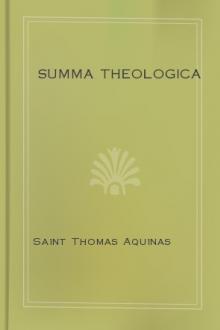
- Author: Saint Thomas Aquinas
- Performer: -
Book online «Summa Theologica by Saint Thomas Aquinas (whitelam books .TXT) 📕». Author Saint Thomas Aquinas
Accordingly if we consider, in faith, the formal aspect of the object, it is nothing else than the First Truth. For the faith of which we are speaking, does not assent to anything, except because it is revealed by God. Hence the mean on which faith is based is the Divine Truth. If, however, we consider materially the things to which faith assents, they include not only God, but also many other things, which, nevertheless, do not come under the assent of faith, except as bearing some relation to God, in as much as, to wit, through certain effects of the Divine operation, man is helped on his journey towards the enjoyment of God. Consequently from this point of view also the object of faith is, in a way, the First Truth, in as much as nothing comes under faith except in relation to God, even as the object of the medical art is health, for it considers nothing save in relation to health.
Reply Obj. 1: Things concerning Christ's human nature, and the sacraments of the Church, or any creatures whatever, come under faith, in so far as by them we are directed to God, and in as much as we assent to them on account of the Divine Truth.
The same answer applies to the Second Objection, as regards all things contained in Holy Writ.
Reply Obj. 3: Charity also loves our neighbor on account of God, so that its object, properly speaking, is God, as we shall show further on (Q. 25, A. 1). _______________________
SECOND ARTICLE [II-II, Q. 1, Art. 2]
Whether the Object of Faith Is Something Complex, by Way of a
Proposition?
Objection 1: It would seem that the object of faith is not something complex by way of a proposition. For the object of faith is the First Truth, as stated above (A. 1). Now the First Truth is something simple. Therefore the object of faith is not something complex.
Obj. 2: Further, the exposition of faith is contained in the symbol. Now the symbol does not contain propositions, but things: for it is not stated therein that God is almighty, but: "I believe in God . . . almighty." Therefore the object of faith is not a proposition but a thing.
Obj. 3: Further, faith is succeeded by vision, according to 1 Cor. 13:12: "We see now through a glass in a dark manner; but then face to face. Now I know in part; but then I shall know even as I am known." But the object of the heavenly vision is something simple, for it is the Divine Essence. Therefore the faith of the wayfarer is also.
On the contrary, Faith is a mean between science and opinion. Now the mean is in the same genus as the extremes. Since, then, science and opinion are about propositions, it seems that faith is likewise about propositions; so that its object is something complex.
I answer that, The thing known is in the knower according to the mode of the knower. Now the mode proper to the human intellect is to know the truth by synthesis and analysis, as stated in the First Part (Q. 85, A. 5). Hence things that are simple in themselves, are known by the intellect with a certain amount of complexity, just as on the other hand, the Divine intellect knows, without any complexity, things that are complex in themselves.
Accordingly the object of faith may be considered in two ways. First, as regards the thing itself which is believed, and thus the object of faith is something simple, namely the thing itself about which we have faith. Secondly, on the part of the believer, and in this respect the object of faith is something complex by way of a proposition.
Hence in the past both opinions have been held with a certain amount of truth.
Reply Obj. 1: This argument considers the object of faith on the part of the thing believed.
Reply Obj. 2: The symbol mentions the things about which faith is, in so far as the act of the believer is terminated in them, as is evident from the manner of speaking about them. Now the act of the believer does not terminate in a proposition, but in a thing. For as in science we do not form propositions, except in order to have knowledge about things through their means, so is it in faith.
Reply Obj. 3: The object of the heavenly vision will be the First Truth seen in itself, according to 1 John 3:2: "We know that when He shall appear, we shall be like to Him: because we shall see Him as He is": hence that vision will not be by way of a proposition but by way of a simple understanding. On the other hand, by faith, we do not apprehend the First Truth as it is in itself. Hence the comparison fails. _______________________
THIRD ARTICLE [II-II, Q. 1, Art. 3]
Whether Anything False Can Come Under Faith?
Objection 1: It would seem that something false can come under faith. For faith is condivided with hope and charity. Now something false can come under hope, since many hope to have eternal life, who will not obtain it. The same may be said of charity, for many are loved as being good, who, nevertheless, are not good. Therefore something false can be the object of faith.
Obj. 2: Further, Abraham believed that Christ would be born, according to John 8:56: "Abraham your father rejoiced that he might see My day: he saw it, and was glad." But after the time of Abraham, God might not have taken flesh, for it was merely because He willed that He did, so that what Abraham believed about Christ would have been false. Therefore the object of faith can be something false.
Obj. 3: Further, the ancients believed in the future birth of Christ, and many continued so to believe, until they heard the preaching of the Gospel. Now, when once Christ was born, even before He began to preach, it was false that Christ was yet to be born. Therefore something false can come under faith.
Obj. 4: Further, it is a matter of faith, that one should believe that the true Body of Christ is contained in the Sacrament of the altar. But it might happen that the bread was not rightly consecrated, and that there was not Christ's true Body there, but only bread. Therefore something false can come under faith.
On the contrary, No virtue that perfects the intellect is related to the false, considered as the evil of the intellect, as the Philosopher declares (Ethic. vi, 2). Now faith is a virtue that perfects the intellect, as we shall show further on (Q. 4, AA. 2, 5). Therefore nothing false can come under it.
I answer that, Nothing comes under any power, habit or act, except by means of the formal aspect of the object: thus color cannot be seen except by means of light, and a conclusion cannot be known save through the mean of demonstration. Now it has been stated (A. 1) that the formal aspect of the object of faith is the First Truth; so that nothing can come under faith, save in so far as it stands under the First Truth, under which nothing false can stand, as neither can non-being stand under being, nor evil under goodness. It follows therefore that nothing false can come under faith.
Reply Obj. 1: Since the true is the good of the intellect, but not of the appetitive power, it follows that all virtues which perfect the intellect, exclude the false altogether, because it belongs to the nature of a virtue to bear relation to the good alone. On the other hand those virtues which perfect the appetitive faculty, do not entirely exclude the false, for it is possible to act in accordance with justice or temperance, while having a false opinion about what one is doing. Therefore, as faith perfects the intellect, whereas hope and charity perfect the appetitive part, the comparison between them fails.
Nevertheless neither can anything false come under hope, for a man hopes to obtain eternal life, not by his own power (since this would be an act of presumption), but with the help of grace; and if he perseveres therein he will obtain eternal life surely and infallibly.
In like manner it belongs to charity to love God, wherever He may be; so that it matters not to charity, whether God be in the individual whom we love for God's sake.
Reply Obj. 2: That "God would not take flesh," considered in itself was possible even after Abraham's time, but in so far as it stands in God's foreknowledge, it has a certain necessity of infallibility, as explained in the First Part (Q. 14, AA. 13, 15): and it is thus that it comes under faith. Hence in so far as it comes under faith, it cannot be false.
Reply Obj. 3: After Christ's birth, to believe in Him, was to believe in Christ's birth at some time or other. The fixing of the time, wherein some were deceived was not due to their faith, but to a human conjecture. For it is possible for a believer to have a false opinion through a human conjecture, but it is quite impossible for a false opinion to be the outcome of faith.
Reply Obj. 4: The faith of the believer is not directed to such and such accidents of bread, but to the fact that the true body of Christ is under the appearances of sensible bread, when it is rightly consecrated. Hence if it be not rightly consecrated, it does not follow that anything false comes under faith. _______________________
FOURTH ARTICLE [II-II, Q. 1, Art. 4]
Whether the Object of Faith Can Be Something Seen?
Objection 1: It would seem that the object of faith is something seen. For Our Lord said to Thomas (John 20:29): "Because thou hast seen Me, Thomas, thou hast believed." Therefore vision and faith regard the same object.
Obj. 2: Further, the Apostle, while speaking of the knowledge of faith, says (1 Cor. 13:12): "We see now through a glass in a dark manner." Therefore what is believed is seen.
Obj. 3: Further, faith is a spiritual light. Now something is seen under every light. Therefore faith is of things seen.
Obj. 4: Further, "Every sense is a kind of sight," as Augustine states (De Verb. Domini, Serm. xxxiii). But faith is of things heard, according to Rom. 10:17: "Faith . . . cometh by hearing." Therefore faith is of things seen.
On the contrary, The Apostle says (Heb. 11:1) that "faith is the evidence of things that appear not."
I answer that, Faith implies assent of the intellect to that which is believed. Now the intellect assents to a thing in two ways. First, through being moved to assent by its very object, which is known either by itself (as in the case of first principles, which are held by the habit of understanding), or through something else already known (as in the case of conclusions which are held by the habit of science). Secondly the intellect assents to something, not through being sufficiently moved to this assent by its proper object, but through an act of choice, whereby it turns voluntarily to one side rather than to the other: and if this be accompanied by doubt or fear of the opposite side, there will be opinion, while, if there be certainty and no fear of the other side, there will be faith.
Now those things are said to be seen which, of themselves, move the intellect or the senses to knowledge of them. Wherefore it is evident that neither faith nor opinion can be of things seen either by the senses or by the intellect.
Reply Obj. 1: Thomas "saw one thing, and believed another" [*St. Gregory: Hom. xxvi in Evang.]: he saw the Man, and believing Him to be God, he made profession of his faith, saying: "My Lord and my God."
Reply Obj. 2: Those things which come under faith can be considered in two ways. First, in particular; and thus they cannot be seen and believed at the same time, as shown above. Secondly, in general, that is, under the common aspect of credibility; and in this way they are seen by the believer. For he would not believe unless, on the evidence of signs, or of something similar, he saw that they ought to be believed.
Reply Obj. 3: The light of faith makes
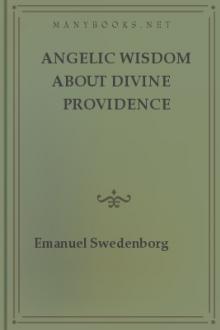
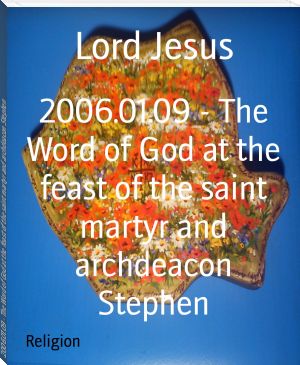
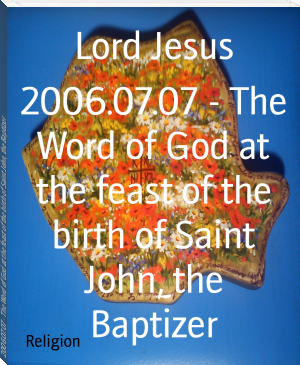

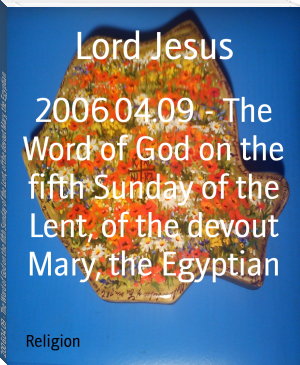
Comments (0)